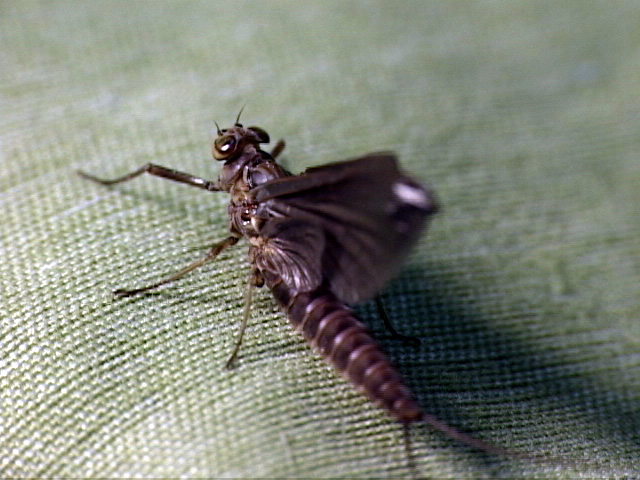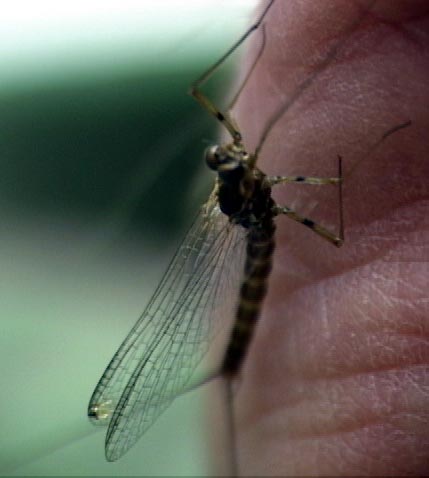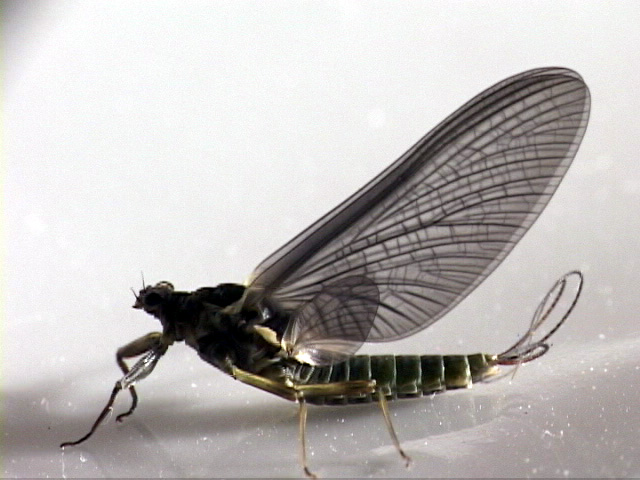
This insect can really turn on
the fish. The dun is the most
important stage to imitate.
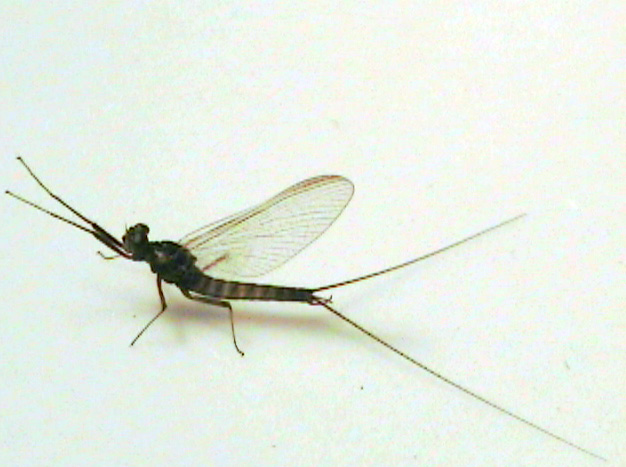
Heptagenia Group of mayflies sometimes called Pale Evening Duns. It was found in the Yellowstone River during the month of September.
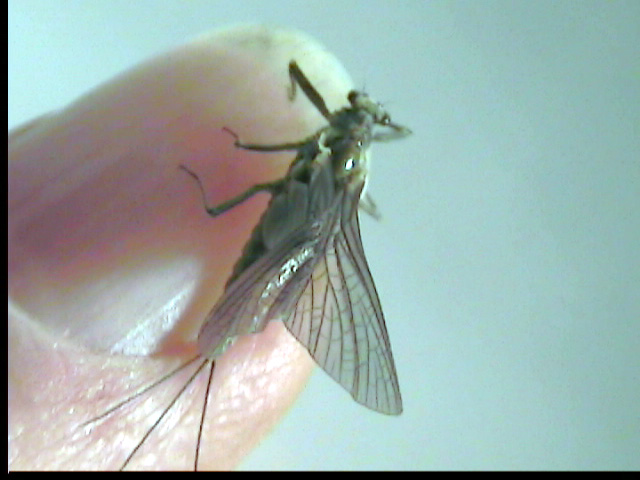
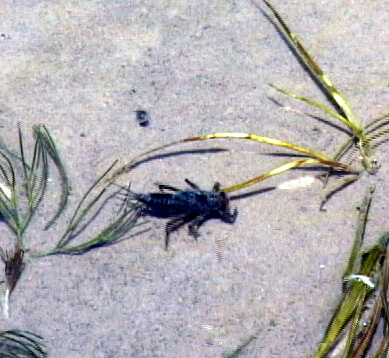
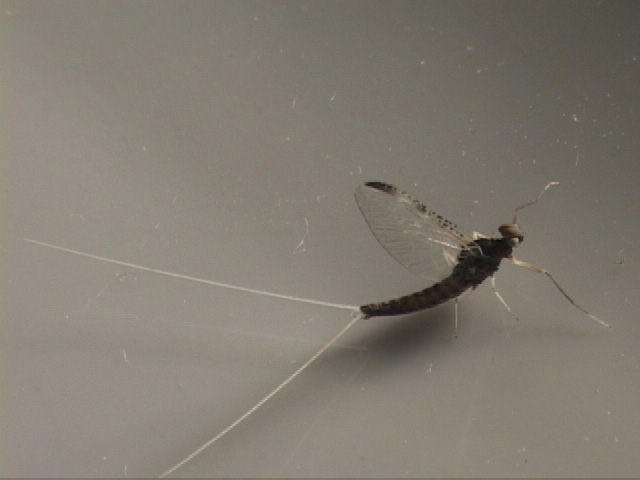
They are plentiful in a few of the streams in Yellowstone that have slow moving water as well as most of the lakes.
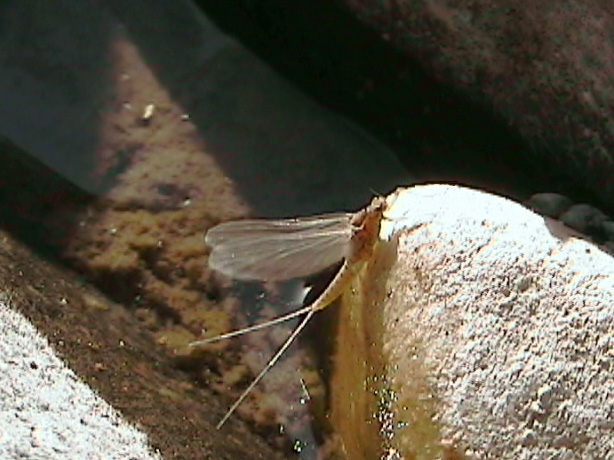
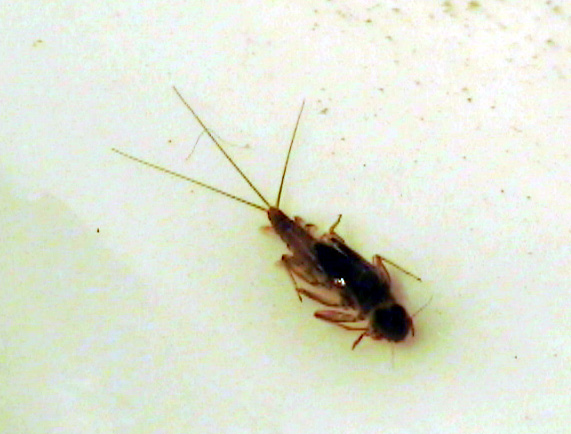
mayfly nymph for certain. It was one of hundreds found in the Lewis River. It would have been a great place to fish a nymph.
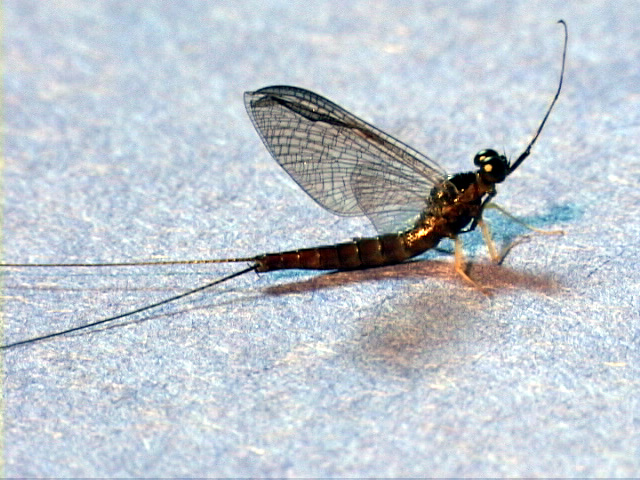
Isonychia species, is the only
fishable stage of the hatch. The duns hatch out of the water.
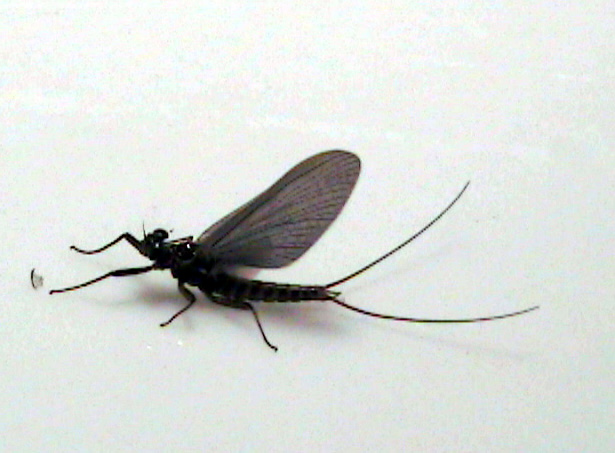
Heptagenia Groups of mayflies.
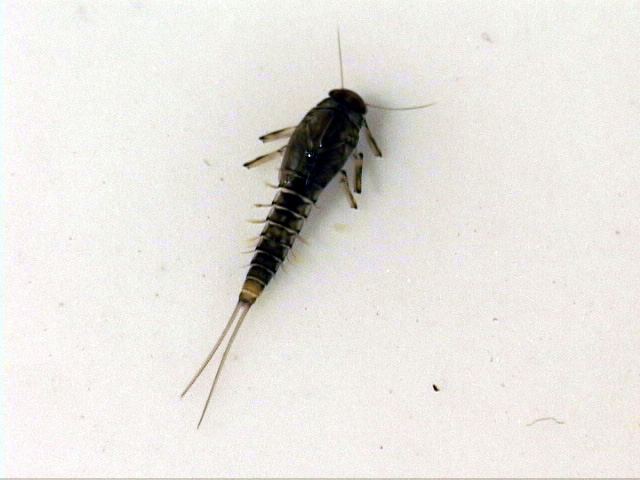
nymph: Trout eat a lot of these where they are available and that is all of the park’s streams. These are small swimming nymphs.
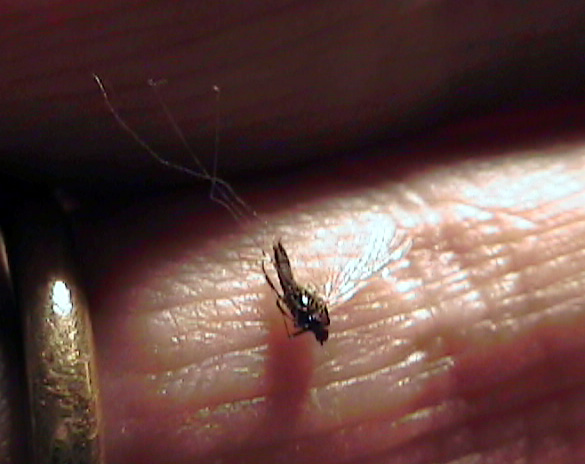
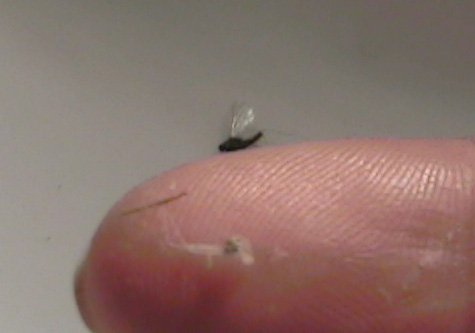
Several families of mayflies are plentiful in Yellowstone National Park. Imitations of mayflies are over fished by most anglers that fish the park’s streams and everywhere else for that matter. They often tie a mayfly dun pattern on when there isn’t a hatch taking place. Caddisflies and stoneflies are also very important in Yellowstone. That said, however, it’s certainly not an insect to ignore by any means.
Brown Duns:
Ameletus species, called Brown Duns exist, but are really not that plentiful. They hatch out of the water and the nymphs are the only stage that could be important to anglers. We don’t consider it of major importance. These swimming nymphs look very similar to the Slate Drake nymphs which are more prevalent. An imitation of it would work for either mayfly nymph. For that reason, we think it’s worth imitating the combination at times.
Blue-winged Olives:
Baetis, species, called Blue-winged Olives are common in the park. The most important species is probably the Baetis tricaudatus but they are others. The Baetis tricaudatus and other Baetis species are multi-brooded, meaning they hatch twice a year. There’s a late spring, early summer hatch and then a fall hatch.
Some anglers think the nymphs are not very important but we think differently. The nymphs are eaten by trout to a large extent and especially just prior to a hatch. To make it a little more complex, the trout also eat the emerging nymphs, duns and spinners. These mayflies usually hatch in the early afternoons. Cloudy, overcast days are by far the best types of days for this hatch. Most spinner falls occur in the late afternoon but they can occur early in the morning depending on the species and weather. Some species of these dive to deposit their eggs.
Little Blue-Winged Olives:
These are the Diphetor and Plauditus species also called Blue-Winged Olives. We prefer to call them the Little Blue-Winged Olives. These range in a hook size from 18 to 24. There are also some Acentrella species we categorize in this group. These are usually a hook size 20 to 26. They prefer the slower or moderate water. They can be important where water flows out of a lake. These mayflies can be bi-brooded and even tri-brooded in some cases.
Small Blue Winged Olives:
Attenella margarita or Small Blue-Winged Olives are found in a few streams in Yellowstone. They prefer slow to moderate water. It appears they like streams with aquatic vegetation but we are not sure that is a requirement. They can be important because they are a late season hatch. These look a lot like baetis mayflies but these have three tails and are therefore fairly easy to distinguish. The nymphs, emergers and duns can be important if the hatch is intense enough to warrant it. We have not seen a spinner fall and assume it occurs during the night. You may find both the duns and spinners on the water in the mornings. The hatch usually occurs during the late morning.
Pale Morning Duns:
There are two Ephemerella species, the inermis and infrequens, or Pale Morning Duns. They are found in just about every, if not all, of the streams in Yellowstone National Park. These are crawler nymphs and prefer slower to moderate water. They are usually found in very plentiful quantities in most streams. These range from a 16 to 18 hook size. This is the most important species of mayfly in the West. They not only are plentiful, they also hatch over a long period of time. All of the stages of life are important. We suggest that you have nymphs, emergers, duns and spinner imitations of this mayfly. The spinners can fall both in the mornings and afternoons.
Great Blue-Winged Red Quills:
The Timpanoga hecuba hecuba, or Great Blue-Winged Red Quill, is found in a few streams of Yellowstone. This is a large mayfly that can easily be confused with the Green Drake. In fact, that’s what most anglers probably think it is unless they closely examine it. They occupy slow to moderate water that usually has a soft or silty bottom. Slough Creek is one of the locations for this mayfly although there are others. The nymphs, emergers, and duns can be important stages to imitate. We have not seen a spinner fall of these mayflies and assume that it occurs after dark.
Small Western Dark Hendricksons:
There are some Serratella tibialis, or Small Western Dark Hendricksons, that can be found in some of the park’s streams. This is a late Summer hatch that may be important because other hatches have ended. All stages of life can be important to imitate. This mayfly usually hatches in the middle of the day. The spinner fall occurs late in the day, just before dark.
Speckle Wings:
Callibaetis species, called Speckle-wings, hatch in calm water, mostly lakes. There are certain locations in a few of the park’s streams where this mayfly can be found but all things considered, it’s only important in the lakes. There it’s the most important mayfly. Every stage of this mayfly’s life can be important to imitate. Trout eat the nymphs, emerging nymphs, duns and spinners. The hatch usually occurs in the late morning. The spinner fall often occurs at the same time.
Tricos:
Tricos or Tricorythodes species can be found in the Madison River. This is because this section of the river is the actually the upper part of Hebgen Lake. Every stage of life of the Trico can be important but the morning spinner fall is usually the best part of the hatch.
Western Green Drakes:
The Western Green Drake or Ephemerella grandis is one of the larger mayflies that is available in most of the park’s streams. They can get the trout going big time. They are available in most of the streams in the park. You can find this mayfly from July to September depending on the stream. All stages of life are important to imitate. They prefer cold, fast flowing water. The hatch usually occurs mid-day, depending on many factors. The spinner fall usually occurs near dark but can occur in the early morning, sometimes before daylight.
Brown Drakes:
We have also spotted an occasional Brown Drake, or Ephemera simulans, in the meadow sections of the Gibbon River. They prefer smooth water. They are not that prevalent anywhere else. The nymphs are burrowers. We do not think the nymphs are very important prior to the time for the hatch. Then, they can be important to imitate. They emerge and the spinners fall is low light conditions, usually after dark. This sometimes occurs during the late afternoon (especially if the sky is cloudy) and early evenings.
Small Western Green Drakes (Flavs):
The Small Western Green Drake, or Drunella flavilinea, usually called a “Flav”, is common in Yellowstone Park. This is a crawler nymph like the big Western Green Drake just much smaller. It usually follows the Green Drake hatch. All stages of this mayfly’s life is important to imitate. The hatch usually occurs during the late afternoon and is usually short unless the sky is overcast or cloudy. The spinner fall also occurs in the late afternoon.
Copyright 2012 James Marsh
Click here for Mayfly imitations (flies)
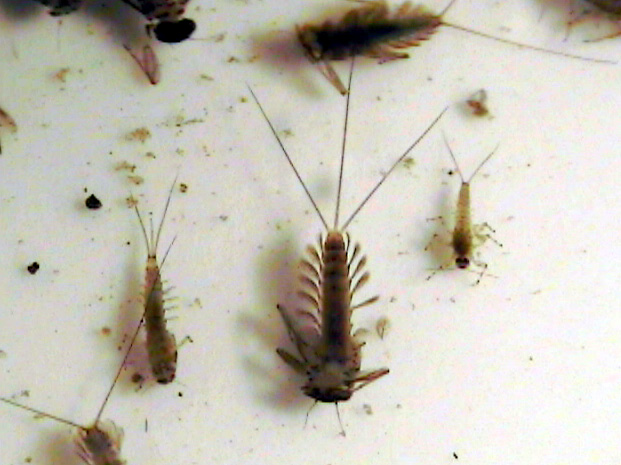
exist in most of the streams in
Yellowstone National Park.
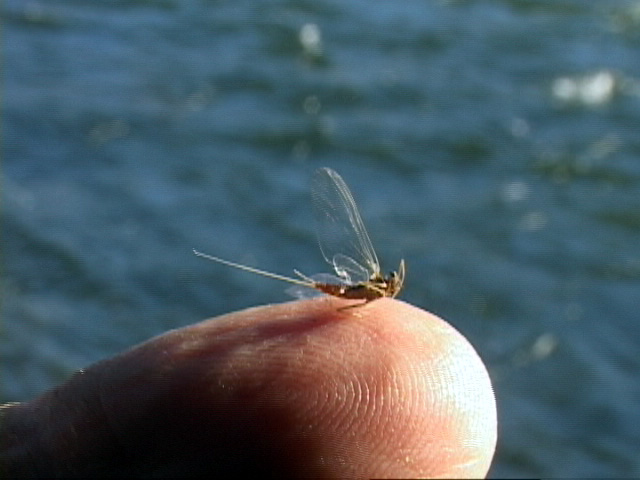
considered by many to be the most
important hatch in the park.
Click below for a list of flies:
Mayflies
Caddisflies
Stoneflies
Midges
Streamers
Terrestrials
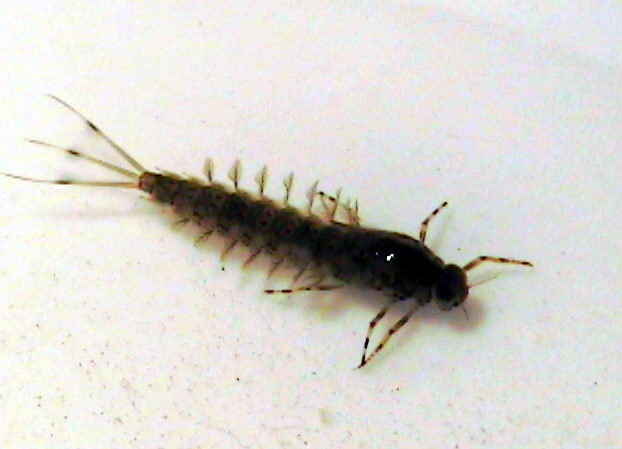
swimming nymph. They are
available for trout to eat.
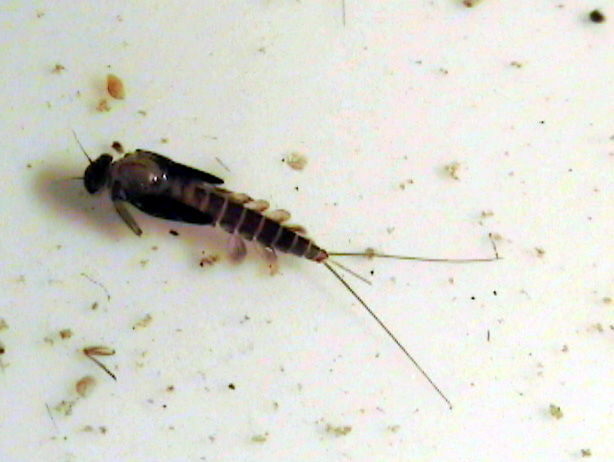
Olive. These are very plentiful.
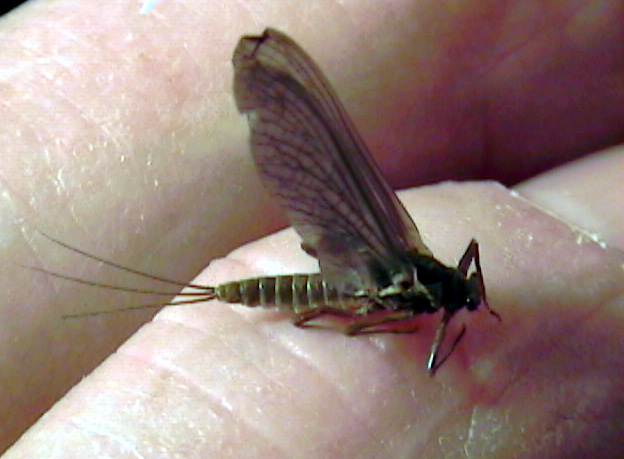
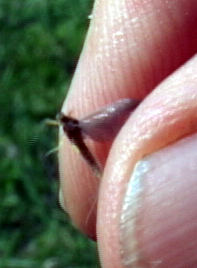
common in the part’s streams.
Some species are bi-brooded
and provide action for the angler
during both the early season and
fall hatch. The little swimming
nymphs are available year round
however. As you can see from
this image, some of the
blue-winged olives are very small
when compared to the thumb and
forefinger. This one lit on my shirt.
If you are not sure of the size, a
good size of fly to start with would
be a 20. Anything larger will
probably be too large.
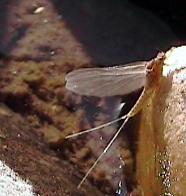
mayfly that we think is a Pale
Evening Dun. Since we didn’t
capture it, we are not for certain.
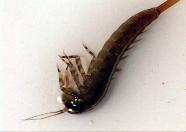
swimmers. They dart around
much like a minnow. Trout eat a
lot of these nymphs.
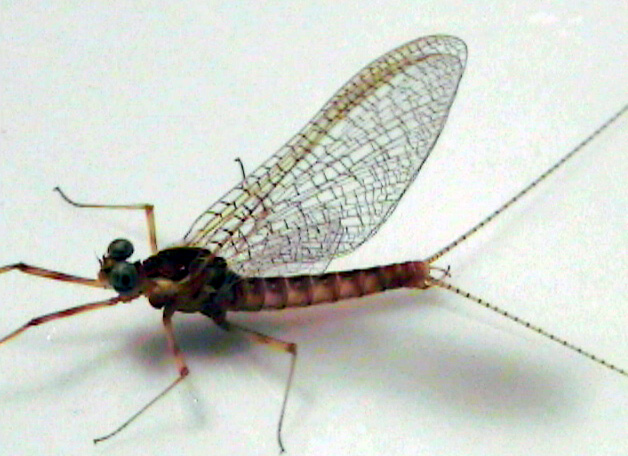
Click below for a list of flies:
Mayflies
Caddisflies
Stoneflies
Midges
Streamers
Terrestrials
Mahogany Duns:
Something overlooked by most all anglers are the hatches of the Paraleptophlebia species.. These hatches can be prolific. They are small, dark colored mayflies usually a size 18 or less. These mayflies can be found in slow to moderate water. Often it’s necessary to use long, light leaders and tippets and make very careful approaches. This is tough fishing but can be extremely productive in the late Summer and early Fall in low, clear water conditions that are usually referred to as to tough conditions.
Western March Browns:
The Western March Brown, or Rhithrogena species provide more important mayfly hatches. These larger clinger nymphs hatch throughout the day over a long period of time. It’s rare to find a large number of them hatching at any one time.
Sometimes, swinging a wet imitation of the emerging nymph in the fast water where they hatch is more effective than fishing the large dun imitation. The spinner fall can be important in the evenings provided it’s a nice, warm day.
Pale Evening Duns:
Species of the Leucrocuta, Cinygma, Nixe and Heptagenia genera, more commonly referred to as the Heptagenia Group of mayflies usually called Pale Evening Duns, exist in the park’s streams. These clinger mayflies can be prolific at certain elevations and times of the year. There’s little difference in the behavior of these and the other clinger nymph mayflies. These are usually a hook size 16 to 18.
Gray Drakes:
Several of the streams in Yellowstone have the Gray Drakes or Siphlonurus species. These are found in Slough Creek in large quantities. They are a swimmer nymph. They like slow to moderate water with vegetation. The nymphs crawl out of the water to emerge so the dun is not that important. The spinner fall can be. It usually occurs in the late morning but can occur near dark.
Dark Red Quills (Cinygmula sp):
The Cinygmula reticulata or Dark Red Quill hatches in August and September in some of the park’s streams. It’s probably the most plentiful Cinygmula species but it’s rather scattered in distribution. We have not found any significant hatches but we understand they can occur. We have only found the mayflies in small quantities and only in isolated areas. It’s a mid day hatch that usually last a very short time.
Slate Cream Dun / Pink Lady:
The Epeorus albertae, is one of the park’s clinger nymph mayflies. The female of this species is called the Pink Lady. This hatch is best imitated with a wet fly because the duns hatch on the bottom or between the bottom and the surface. They don’t hatch on the surface. They will float down the streams in the cold water for a few feet before departing the water and the trout will take some from the surface very aggressively, even in the colder water. Most anglers prefer a dry fly imitation and the dry imitation of the dun will work most of the time, just not as effectively as the wet fly. These mayflies usually hatch in the late afternoon.
Great Western Leadwings or Slate Drakes:
The Isonychia species or Slate Drakes are fairly plentiful in many of the streams of Yellowstone. These are large swimming nymphs. The duns hatch out of the water on the bank and rocks and are not a productive stage to match. They don’t hatch in any concentration, rather periodically throughout the day. The spinner fall, which happens near dusk or after, can be important if there are enough flies falling in the water to get the trout’s attention. A larger nymph presented will some action imitates these strong swimmers better than a dead drift.
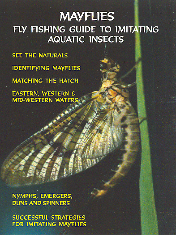
Click Here for More Information
